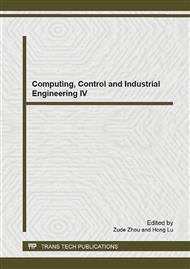p.265
p.270
p.276
p.280
p.285
p.291
p.296
p.300
p.304
System Identification of Unmanned Planning Boat Rolling Motion Mode
Abstract:
In this paper, the author took an unmanned planning boat as the object of study and carried out a series of rolling decay ship model test by changing the draft. The author established nine kinds of mathematical model of rolling decay motion model system identification by using different damping and righting moment and established the optimization calculation of the objective function based on the principle of system identification. Then the author adapted the genetic algorithm of system identification program which is based on the Visual Basic 6.0 and got 15 kinds of identification programs. By doing research on the first three cycles of the series of rolling angular velocity curve and identifying respectively the resulting 15 kinds of identification programs, the author confirmed the feasibility of the adapted program. Comparing different drafts and the initial roll angle identification results, the author found a reasonable hydrostatic roll motion equation of the unmanned planning boat in the case of different drafts and the initial roll angle, and made a preliminary analysis.
Info:
Periodical:
Pages:
285-290
Citation:
Online since:
October 2013
Authors:
Price:
Сopyright:
© 2013 Trans Tech Publications Ltd. All Rights Reserved
Share:
Citation:


